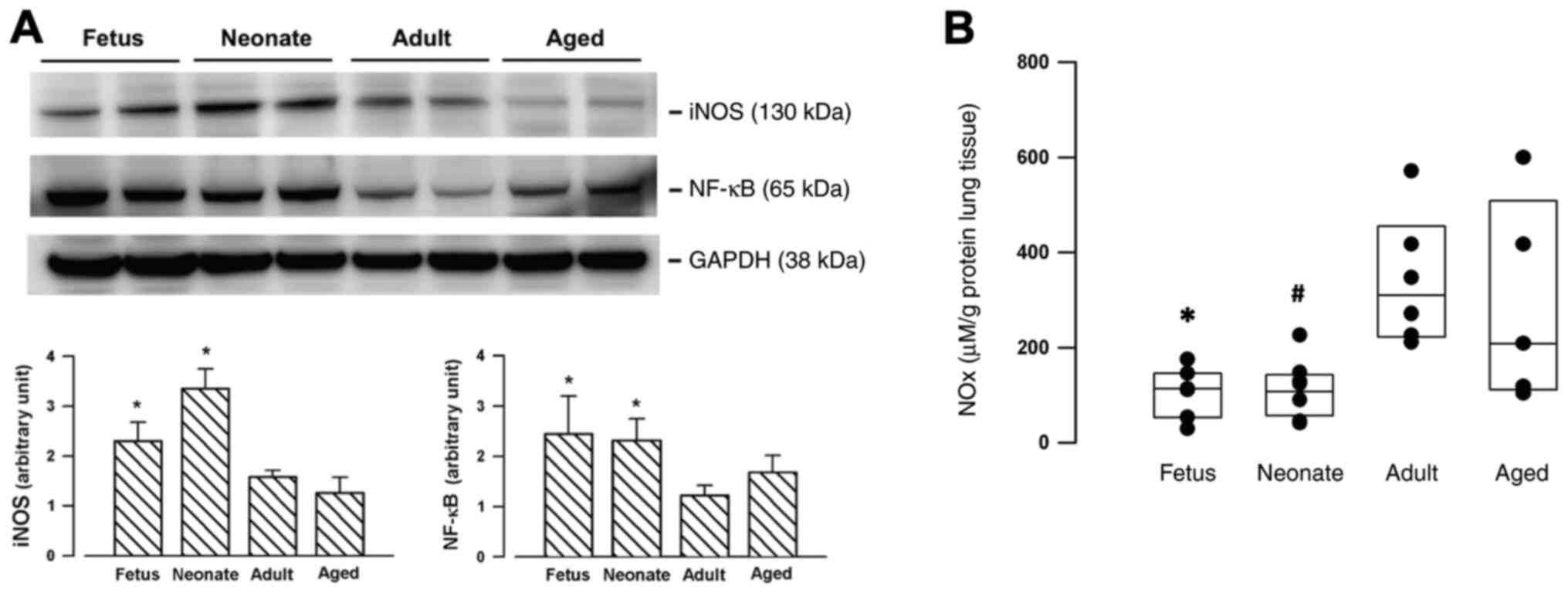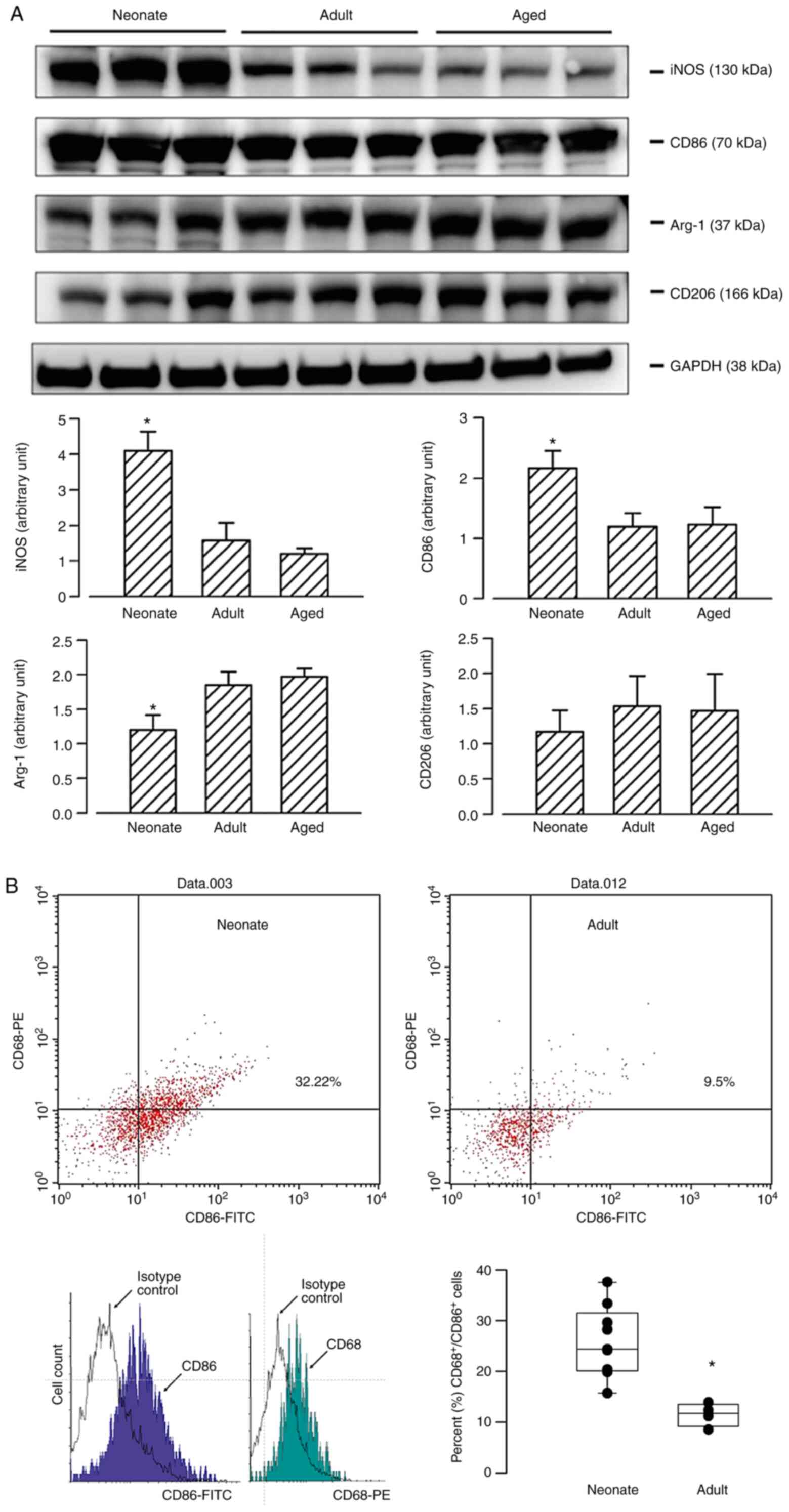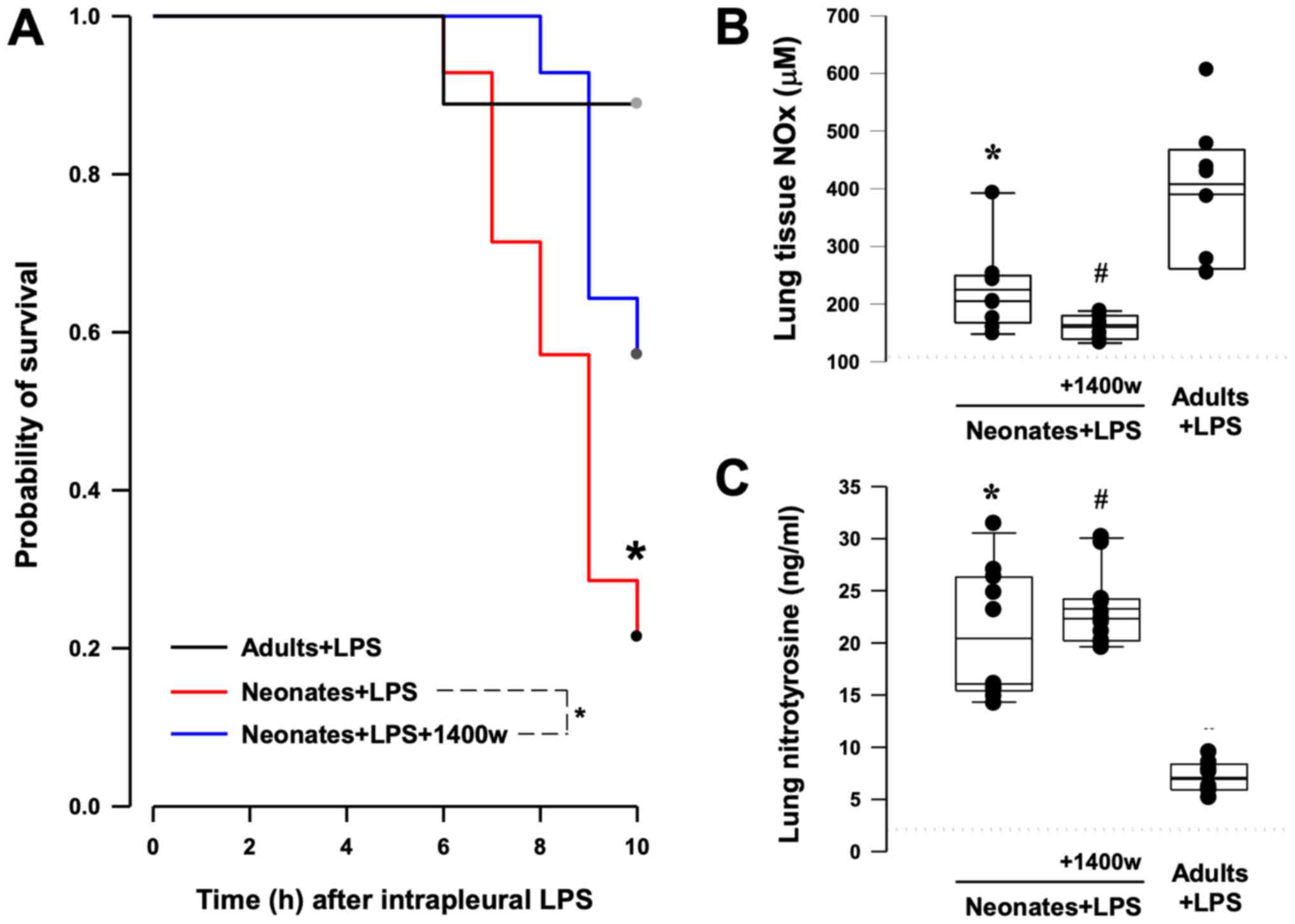|
1
|
Gordon SB and Read RC: Macrophage defences
against respiratory tract infections. Br Med Bull. 61:45–61.
2002.PubMed/NCBI View Article : Google Scholar
|
|
2
|
Italiani P and Boraschi D: From monocytes
to M1/M2 macrophages: Phenotypical vs. functional differentiation.
Front Immunol. 5(514)2014.PubMed/NCBI View Article : Google Scholar
|
|
3
|
Yang J, Zhang L, Yu C, Yang XF and Wang H:
Monocyte and macrophage differentiation: Circulation inflammatory
monocyte as biomarker for inflammatory diseases. Biomark Res.
2(1)2014.PubMed/NCBI View Article : Google Scholar
|
|
4
|
Arango Duque G and Descoteaux A:
Macrophage cytokines: Involvement in immunity and infectious
diseases. Front Immunol. 5(491)2014.PubMed/NCBI View Article : Google Scholar
|
|
5
|
Mills CD, Kincaid K, Alt JM, Heilman MJ
and Hill AM: M-1/M-2 macrophages and the Th1/Th2 paradigm. J
Immunol. 164:6166–6173. 2000.PubMed/NCBI View Article : Google Scholar
|
|
6
|
Hu G and Christman JW: Editorial: Alveolar
macrophages in lung inflammation and resolution. Front Immunol.
10(2275)2019.PubMed/NCBI View Article : Google Scholar
|
|
7
|
Byrne AJ, Mathie SA, Gregory LG and Lloyd
CM: Pulmonary macrophages: Key players in the innate defence of the
airways. Thorax. 70:1189–1196. 2015.PubMed/NCBI View Article : Google Scholar
|
|
8
|
Allard B, Panariti A and Martin JG:
Alveolar Macrophages in the Resolution of Inflammation, Tissue
Repair, and Tolerance to Infection. Front Immunol.
9(1777)2018.PubMed/NCBI View Article : Google Scholar
|
|
9
|
Pang YL, Chen BS, Li SP, Huang CC, Chang
SW, Lam CF and Tsai YC: The preconditioning pulmonary protective
effect of volatile isoflurane in acute lung injury is mediated by
activation of endogenous iNOS. J Anesth. 26:822–828.
2012.PubMed/NCBI View Article : Google Scholar
|
|
10
|
Ferrer-Sueta G, Campolo N, Trujillo M,
Bartesaghi S, Carballal S, Romero N, Alvarez B and Radi R:
Biochemistry of peroxynitrite and protein tyrosine nitration. Chem
Rev. 118:1338–1408. 2018.PubMed/NCBI View Article : Google Scholar
|
|
11
|
Campolo N, Issoglio FM, Estrin DA,
Bartesaghi S and Radi R: 3-Nitrotyrosine and related derivatives in
proteins: Precursors, radical intermediates and impact in function.
Essays Biochem. 64:111–133. 2020.PubMed/NCBI View Article : Google Scholar
|
|
12
|
Jablonski KA, Amici SA, Webb LM,
Ruiz-Rosado Jde D, Popovich PG, Partida-Sanchez S and
Guerau-de-Arellano M: Novel markers to delineate murine M1 and M2
macrophages. PLoS One. 10(e0145342)2015.PubMed/NCBI View Article : Google Scholar
|
|
13
|
Nie H, Wang A, He Q, Yang Q, Liu L, Zhang
G, Huang Y, Ding X, Yu H and Hu S: Phenotypic switch in lung
interstitial macrophage polarization in an ovalbumin-induced mouse
model of asthma. Exp Ther Med. 14:1284–1292. 2017.PubMed/NCBI View Article : Google Scholar
|
|
14
|
Klinder A, Markhoff J, Jonitz-Heincke A,
Sterna P, Salamon A and Bader R: Comparison of different cell
culture plates for the enrichment of non-adherent human mononuclear
cells. Exp Ther Med. 17:2004–2012. 2019.PubMed/NCBI View Article : Google Scholar
|
|
15
|
Turtzo LC, Lescher J, Janes L, Dean DD,
Budde MD and Frank JA: Macrophagic and microglial responses after
focal traumatic brain injury in the female rat. J
Neuroinflammation. 11(82)2014.PubMed/NCBI View Article : Google Scholar
|
|
16
|
Reuter S, Moser C and Baack M: Respiratory
distress in the newborn. Pediatr Rev. 35:417–428; quiz 429.
2014.PubMed/NCBI View Article : Google Scholar
|
|
17
|
Yu JC, Khodadadi H, Malik A, Davidson B,
Salles E, Bhatia J, Hale VL and Baban B: Innate immunity of
neonates and infants. Front Immunol. 9(1759)2018.PubMed/NCBI View Article : Google Scholar
|
|
18
|
Atri C, Guerfali FZ and Laouini D: Role of
human macrophage polarization in inflammation during infectious
diseases. Int J Mol Sci. 19(1801)2018.PubMed/NCBI View Article : Google Scholar
|
|
19
|
Winterberg T, Vieten G, Meier T, Yu Y,
Busse M, Hennig C, Hansen G, Jacobs R, Ure BM and Kuebler JF:
Distinct phenotypic features of neonatal murine macrophages. Eur J
Immunol. 45:214–224. 2015.PubMed/NCBI View Article : Google Scholar
|
|
20
|
Iles KE and Forman HJ: Macrophage
signaling and respiratory burst. Immunol Res. 26:95–105.
2002.PubMed/NCBI View Article : Google Scholar
|
|
21
|
Haslund-Vinding J, McBean G, Jaquet V and
Vilhardt F: NADPH oxidases in oxidant production by microglia:
Activating receptors, pharmacology and association with disease. Br
J Pharmacol. 174:1733–1749. 2017.PubMed/NCBI View Article : Google Scholar
|
|
22
|
Wizemann TM, Gardner CR, Laskin JD,
Quinones S, Durham SK, Goller NL, Ohnishi ST and Laskin DL:
Production of nitric oxide and peroxynitrite in the lung during
acute endotoxemia. J Leukoc Biol. 56:759–768. 1994.PubMed/NCBI View Article : Google Scholar
|
|
23
|
Prolo C, Alvarez MN and Radi R:
Peroxynitrite, a potent macrophage-derived oxidizing cytotoxin to
combat invading pathogens. Biofactors. 40:215–225. 2014.PubMed/NCBI View Article : Google Scholar
|
|
24
|
Gunaydin H and Houk KN: Mechanisms of
peroxynitrite-mediated nitration of tyrosine. Chem Res Toxicol.
22:894–898. 2009.PubMed/NCBI View Article : Google Scholar
|
|
25
|
Linares E, Giorgio S, Mortara RA, Santos
CX, Yamada AT and Augusto O: Role of peroxynitrite in macrophage
microbicidal mechanisms in vivo revealed by protein nitration and
hydroxylation. Free Radic Biol Med. 30:1234–1242. 2001.PubMed/NCBI View Article : Google Scholar
|
|
26
|
Alvarez MN, Peluffo G, Piacenza L and Radi
R: Intraphagosomal peroxynitrite as a macrophage-derived cytotoxin
against internalized Trypanosoma cruzi: Consequences for oxidative
killing and role of microbial peroxiredoxins in infectivity. J Biol
Chem. 286:6627–6640. 2011.PubMed/NCBI View Article : Google Scholar
|
|
27
|
Hollenberg SM, Broussard M, Osman J and
Parrillo JE: Increased microvascular reactivity and improved
mortality in septic mice lacking inducible nitric oxide synthase.
Circ Res. 86:774–778. 2000.PubMed/NCBI View Article : Google Scholar
|
|
28
|
Cobb JP, Hotchkiss RS, Swanson PE, Chang
K, Qiu Y, Laubach VE, Karl IE and Buchman TG: Inducible nitric
oxide synthase (iNOS) gene deficiency increases the mortality of
sepsis in mice. Surgery. 126:438–442. 1999.PubMed/NCBI
|
|
29
|
Laskin DL: Macrophages and inflammatory
mediators in chemical toxicity: A battle of forces. Chem Res
Toxicol. 22:1376–1385. 2009.PubMed/NCBI View Article : Google Scholar
|
|
30
|
Gordon S and Martinez FO: Alternative
activation of macrophages: Mechanism and functions. Immunity.
32:593–604. 2010.PubMed/NCBI View Article : Google Scholar
|
|
31
|
Liu G, Xia XP, Gong SL and Zhao Y: The
macrophage heterogeneity: Difference between mouse peritoneal
exudate and splenic F4/80+ macrophages. J Cell Physiol.
209:341–352. 2006.PubMed/NCBI View Article : Google Scholar
|


















